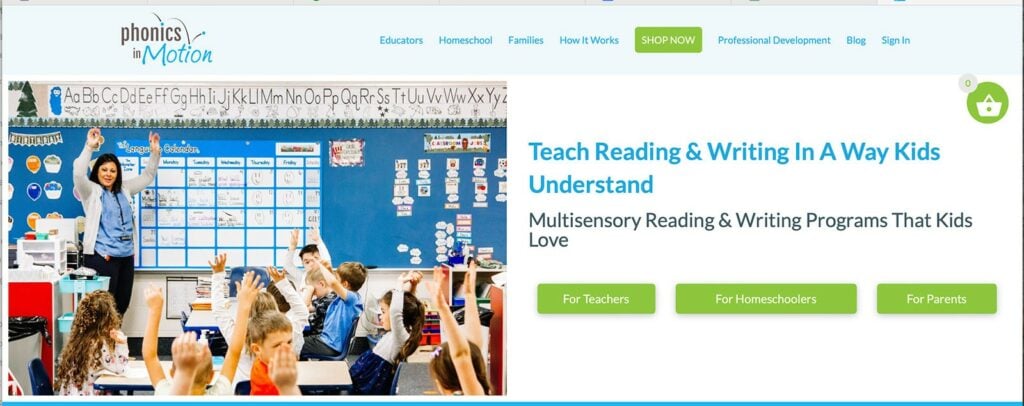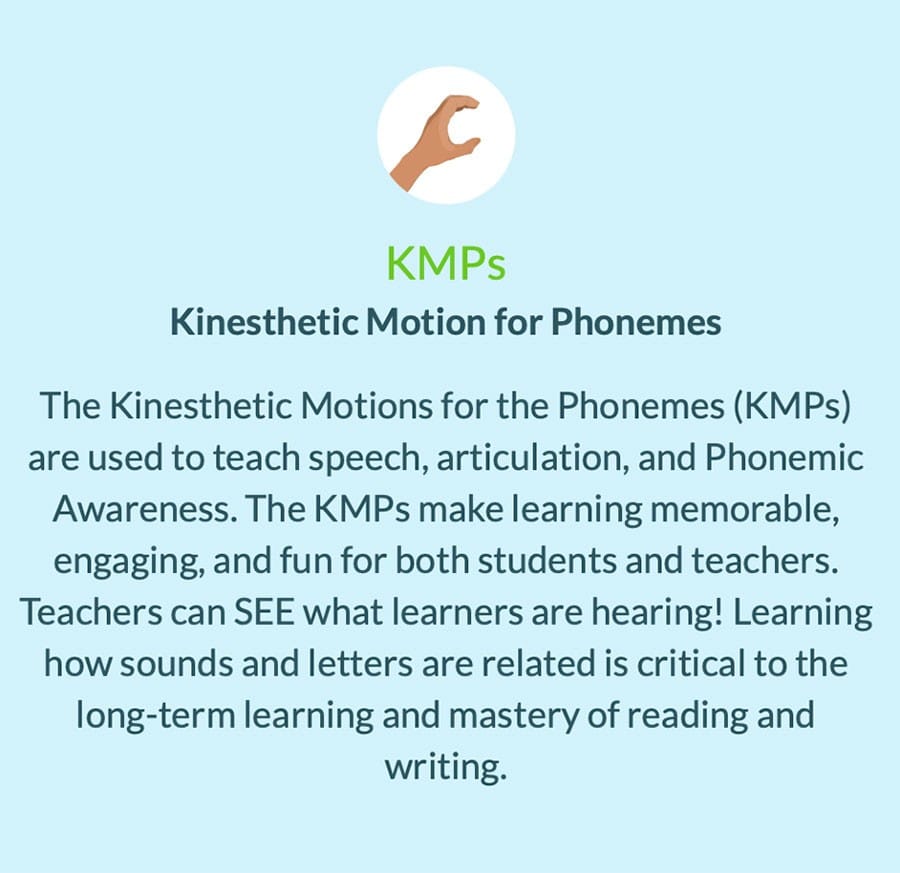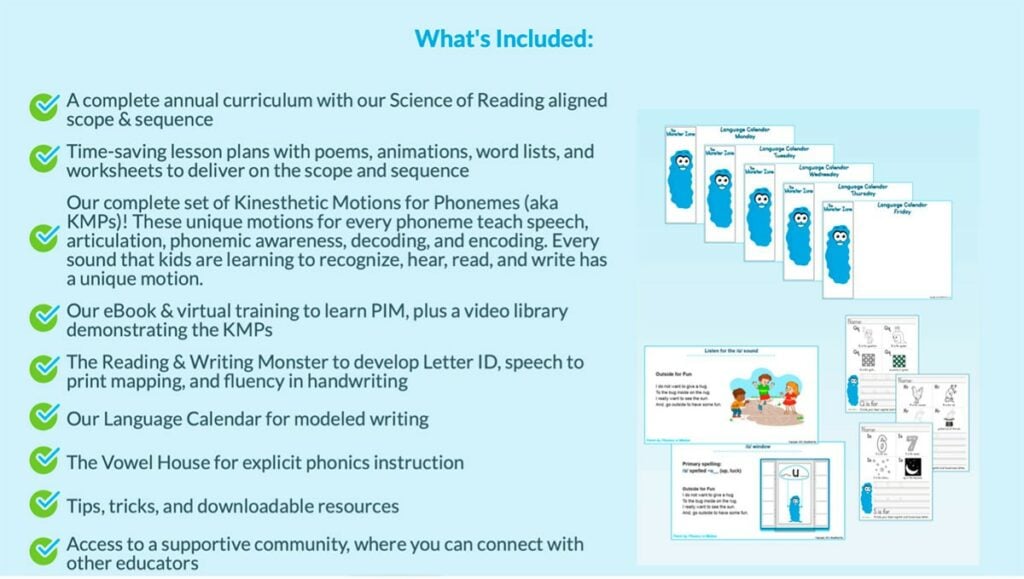As educators, we often encounter moments that redefine how we perceive the art of teaching and learning. The world of early literacy is vast; within it, some approaches truly stand out. Phonics in Motion (PIM) is one such platform that has struck a chord with my educational philosophy, echoing sentiments I’ve held through over a decade of hands-on classroom experience.
Drawing from my 12+ years in the K-12 classroom, I’ve witnessed firsthand the unique challenges and rewards of teaching diverse groups of students. Second language learners, in particular, require tailored approaches that cater to their linguistic needs, laying a solid foundation for future language mastery. During my search for effective instructional strategies, I stumbled upon PIM. The promise of multisensory techniques and a dedicated focus on phonics resonated with my belief in the pivotal role of explicit phonics instruction, especially in early literacy development.
I’ve always maintained that a solid understanding of phonics is the key to unlocking the mysteries of reading and writing. But, the challenge has always been how to present it in an engaging, comprehensive, and, most importantly, effective way. Phonics in Motion seemed to echo these beliefs, promising an approach that wasn’t just theoretical but born out of years of research and practical application.
The beauty of education lies in its evolution. As we enter an era where technology seamlessly integrates with classroom instruction, platforms like PIM emerge as frontrunners in this revolution. But beyond the fancy interface and digital tools, what truly caught my attention was its potential to provide a deep, meaningful learning experience rooted in time-tested pedagogical practices.

This review aims to dive deep into Phonics in Motion, exploring its features, benefits, and potential shortcomings. Join me as I unpack this platform, assessing its relevance and effectiveness in the contemporary educational landscape.
Table of Contents
What is Phonics in Motion?
Diving into the heart of Phonics in Motion (PIM), one is immediately struck by its holistic design, which seeks to interweave the foundational threads of phonics with engaging, multisensory techniques. For someone with a deep-rooted appreciation of explicit phonics instruction, like myself, this is akin to finding a treasured tome in a vast library of literacy resources.
At its core, PIM is not just an online platform; it’s a comprehensive ecosystem designed to nurture early literacy skills. It combines auditory, visual, and kinesthetic learning principles, ensuring that students, irrespective of their preferred learning style, can grasp and internalize the nuances of phonics.
The platform’s interface is intuitive, catering to educators and students. There’s a seamless integration of audio-visual elements, interactive exercises, and well-structured lessons that progressively build upon each other. I genuinely appreciate how PIM doesn’t just focus on rote memorization. Instead, it promotes active engagement, prompting students to think, analyze, and apply their knowledge.
PIM offers many resources for educators like me, especially those with years of classroom experience. Lesson plans, instructional videos, and assessment tools are all at our fingertips, ready to be incorporated into diverse classroom settings. This includes the needs of second language learners, who can significantly benefit from PIM’s systematic approach, which emphasizes auditory discrimination and phonemic awareness.

PIM’s adaptability is commendable. Whether you’re a homeschooling parent, a classroom teacher, or an educator at a learning center, the platform can be tailored to fit varied instructional needs. This flexibility ensures that students receive consistent, high-quality phonics instruction, regardless of setting.
Phonics in Motion presents a well-rounded approach to phonics instruction, blending traditional pedagogical principles with innovative, modern teaching tools. It’s a platform that understands the intricacies of early literacy and offers a solution that’s both comprehensive and engaging.
Features offered by the platform
When evaluating an online educational tool, especially from the perspective of someone with over a decade of experience in K-12 classrooms, the practicality of its features plays a crucial role. Phonics in Motion (PIM) has a robust suite of offerings catering to educators, students, and parents’ diverse needs.
1. Multisensory lessons
The first thing that stands out about PIM is its commitment to multisensory learning. Each lesson incorporates auditory, visual, and kinesthetic components. This ensures that all students, whether auditory, visual, or those who learn best through movement, find an entry point into the material.

2. Interactive exercises
A cornerstone of effective learning is active engagement. PIM offers a variety of interactive exercises that require students not just passively to consume content but to actively apply what they’ve learned. This hands-on approach resonates with my belief in research-based practices, ensuring students grasp foundational phonics principles.
3. Diverse lesson plans
Drawing from my years in the classroom, I can attest to the need for varied lesson plans that cater to different teaching scenarios. PIM provides a range of lesson plans, from those designed for individual instruction to those tailored for group settings.
4. Assessment tools
No educational platform is complete without robust assessment tools. PIM’s assessments are comprehensive, allowing educators to gauge student progress, identify areas of improvement, and tailor instruction accordingly.
5. Resource library
PIM boasts a vast library of resources, from instructional videos to printable worksheets. For educators who prioritize explicit phonics instruction, this library is a treasure trove of tools that can be seamlessly integrated into any curriculum.
6. Support for second language learners
Given my experience with second language learners, I was particularly keen on evaluating this aspect of PIM. The platform’s emphasis on auditory discrimination and phonemic awareness is especially beneficial for students navigating the intricacies of a new language.
In essence, Phonics in Motion stands out not just for its depth but also its breadth. It offers a well-rounded suite of practical features that cater to diverse educational needs, ensuring educators and students have the tools they need to succeed.
Pricing and value-for-money
Understanding the value a product offers is essential, especially in education, where each investment we make impacts our learners’ growth and development. From the details provided, Phonics in Motion has integrated an all-rounded approach to phonics instruction, intertwining it with the elements of the Science of Reading. Here’s a detailed breakdown of what you’re getting for your money:
What’s Included:
- A complete annual curriculum: This curriculum fully aligns with the Science of Reading, ensuring the best pedagogical approaches are used.
- Time-saving lesson plans: This includes various instructional materials, such as poems, animations, word lists, and worksheets, to fulfill the outlined scope and sequence.
- Kinesthetic Motions for Phonemes (KMPs): A unique feature, these motions aim to teach speech, articulation, phonemic awareness, decoding, and encoding. Every sound students are introduced to is paired with a distinct motion, aiding memory and understanding.
- Training material: This includes an eBook, virtual Phonics in Motion method training, and a video library showcasing the KMPs.
- The Reading & Writing Monster: A tool to enhance Letter ID, speech-to-print mapping, and fluency in handwriting.
- Language calendar: Designed for modeled writing.
- The Vowel House: An instrument for explicit phonics instruction.
- Additional resources: Including tips, tricks, and downloadable materials.
- Supportive community: A bonus allowing educators to connect, share, and learn from one another.
Different packages are available depending on whether you’re a teacher paying for a class, you’re a parent homeschooling your children, or you’re a parent looking for supplementary learning material.
For teachers:
- Monthly subscription: Priced at $19.99 per month, this adds up to $240 per year. This option is flexible, as you can cancel at any time.
- Yearly Subscription: At $14.99 per month, this totals $179.88 annually, giving you three months free compared with the monthly subscription.

For Homeschooling:
The program also offers a comprehensive package for homeschooling. This caters to parents wanting to instill a love for reading and writing in their children. It promises everything you would need to guarantee literacy success for your child, from lesson plans, teaching strategies, eBooks, and worksheets to virtual training. Moreover, the power of Phonics in Motion ensures that the child is not just learning but is also engaged and interested.
The pricing for homeschooling is the same as for the teacher packages, but instead of buying material for a specific year, you purchase access to their complete package covering all years.
For Parents:
For parents looking for supplementary literary resources, PIM breaks down their offerings in a more modular way. You can purchase annual access to the following packages:
- Phonic Awareness Foundations ($37 per year)
- Early Readers & Writers Program ($47 per year)
- Vowel House Spelling Program ($47 per year)
They also sell their PIM Teaching Guide as an e-book ($47) or as a paperback ($57 – via Amazon).
Recommendations for potential students
Phonics in Motion is an exceptional platform, especially for those who aim to provide a holistic literacy experience rooted in research. But as with any comprehensive tool, it’s essential to approach it with a clear understanding of what it offers and how best to harness its vast potential.
1. Dive deep with commitment
Given the extensive nature of the platform, potential users must dive in with a genuine commitment. As with any tool, the benefits are best reaped with consistent usage and a deep dive into all its features. Setting aside dedicated time initially to familiarize oneself with the platform can save hours in the long run and ensure a smoother, more productive experience.
2. Leverage the community
One of Phonics in Motion’s standout features is its community support. This isn’t merely an additional feature but an invaluable resource. Engaging with fellow educators, sharing experiences, seeking advice, and providing insights can amplify the learning curve significantly. Remember, collective wisdom often trumps individual knowledge.
3. Continuous professional development
Given my background in educational leadership, I cannot emphasize the importance of continuous learning. Phonics in Motion isn’t just a static platform but offers ongoing support and learning opportunities. Make the most of their eBook, virtual training sessions, and video library. Staying updated and continuously refining your skills will maximize the platform’s benefits for your students.
4. Customize to fit your needs
Every classroom and every student is unique. While the platform offers a comprehensive curriculum, it’s essential to adapt and customize it to fit the specific needs of your students. Whether you’re dealing with second language learners, students with learning differences, or those who are gifted, the platform’s flexibility allows for tailored instruction.
5. Consider the investment
While the pricing of Phonics in Motion is a significant factor, seeing it as an investment in quality education is vital. With the plethora of resources, methodologies, and support, the platform presents a value proposition beyond just dollars and cents. This could be the gold standard for educators and parents who prioritize quality, research-backed phonics instruction.
6. Patience and persistence
Lastly, as with any new endeavor, patience is vital. There’s a learning curve involved, and newcomers might initially feel overwhelmed. But with persistence and a genuine desire to unlock the platform’s full potential, the rewards are manifold. Remember, the journey of a thousand miles begins with a single step. Approach Phonics in Motion with an open heart and mind, and watch as it transforms your teaching and your student’s learning experience.
Main pros and cons of Phonics in Motion
Pros
- In-depth literacy focus: The platform offers a robust, all-encompassing approach to literacy, touching on all essential aspects of reading and writing.
- Versatile age group compatibility: Designed to cater to a broad age spectrum, from preschoolers to third graders, ensuring continuity and progression in learning.
- Student engagement: Its unique tools and methods, such as Kinesthetic Motions for Phonemes, make learning interactive and enjoyable for students, promoting retention.
- Community engagement: One of its standout features is the supportive community, fostering a space for educators and parents to collaborate, share experiences, and provide guidance.
Cons
- Potential initial overwhelm: The sheer volume of content and features, though beneficial in the long run, might seem daunting to newcomers, requiring a steeper learning curve.
- Cost consideration: While the platform offers many resources, the pricing might feel steep for individual educators or parents on a tight budget.
Conclusion
Discerning which tools justify their price point is no simple task in the panorama of literacy-focused educational resources. As someone deeply entrenched in educational leadership and with over a decade of firsthand K-12 classroom experience, I’ve developed an acute sense of recognizing genuine value. And while every tool has its merits and limitations, the true essence of value lies in its capacity to impart lasting, impactful knowledge.
Evaluating Phonics in Motion, it’s impossible to ignore its price tag. The investment is substantial, a fact that neither educators nor parents can or should sidestep. Yet, as with most things in education (and indeed in life), it’s crucial to delve deeper than just the surface. Beyond the dollar amount is a reservoir of pedagogical wealth that promises not just literacy but literacy built on a foundation of solid, research-backed principles.
My experiences, particularly with second language learners, have repeatedly emphasized the indispensable nature of explicit phonics instructions. It’s not merely a method but a cornerstone in the edifice of reading proficiency. Learning to read, when stripped of its nuances, is about decoding symbols to derive meaning. Yet, in reality, it’s so much more than that. It’s about connection, comprehension, and the joy of discovery. Platforms like Phonics in Motion, with their comprehensive suite of tools and methodologies, encapsulate this multifaceted journey of reading.
While the pricing may initially be a hurdle, a deeper exploration reveals it as a gateway to a treasure trove of resources. The platform’s alignment with the Science of Reading isn’t just a fancy tagline; it’s a testament to its commitment to delivering quality, research-backed content. When weighed against the outcomes it promises and often has, the cost looks less like an expenditure and more like an investment in a child’s future.
The realm of education is not just about individual growth but collective advancement. The community aspect of Phonics in Motion amplifies its value manifold, allowing educators to share, collaborate, and support one another. In the labyrinthine teaching journey, where challenges lurk around every corner, communal support can often be the guiding light.
The essence of any educational tool isn’t just in its content or price but in its offerings’ synergy. With its robust resources and unwavering commitment to research-backed pedagogy, Phonics in Motion presents a compelling argument for its value proposition. The pricing, though significant, is a beacon signaling the depth and breadth of the platform’s potential impact. For educators and parents resolute in their mission to provide unparalleled literacy education, this platform might be the keystone they’ve been seeking.




